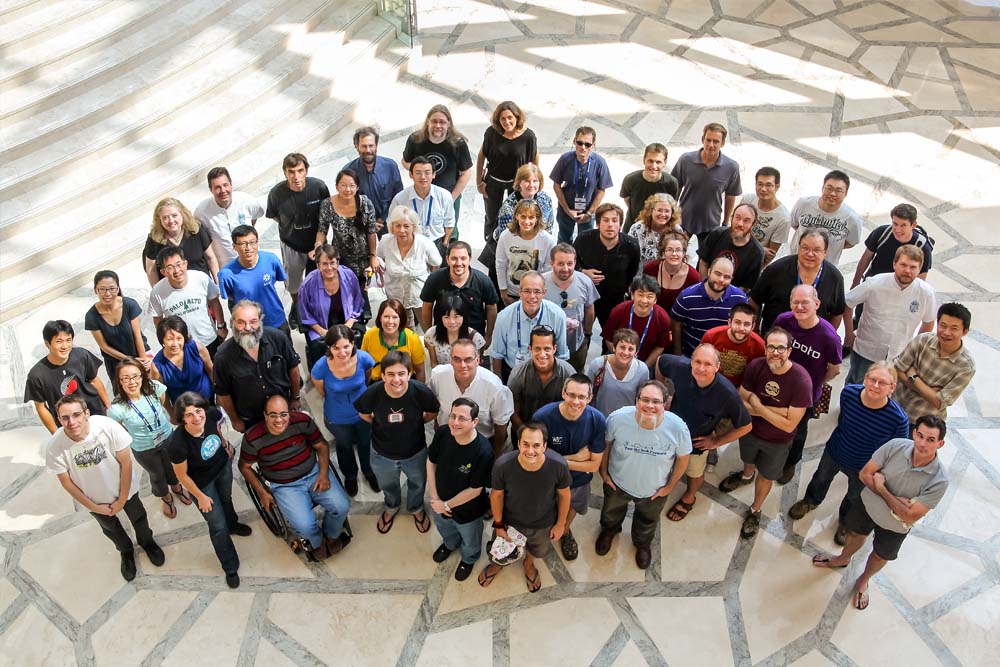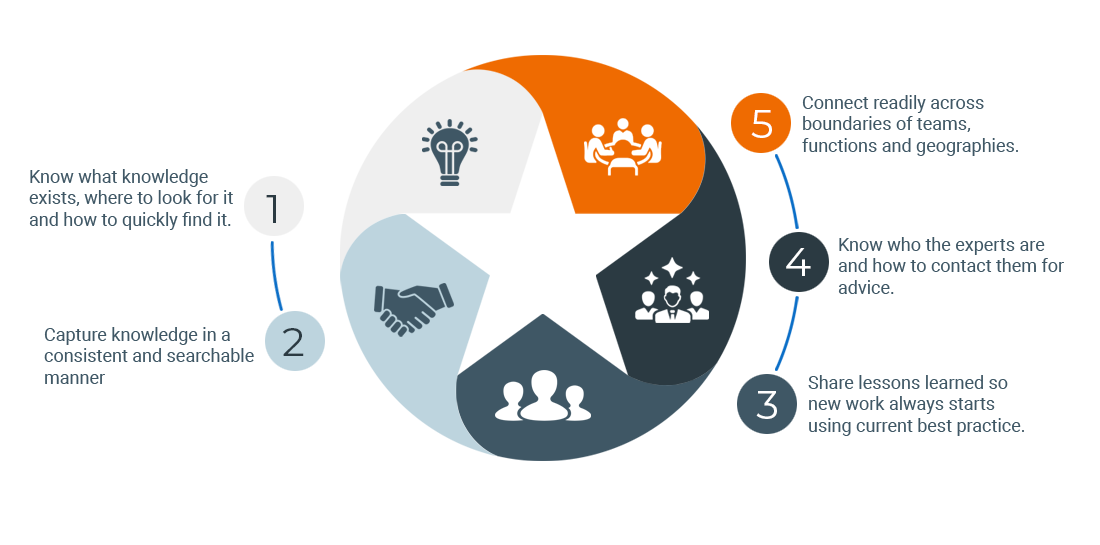Knowledge Management Components

People
Changing traditional mindsets and organizational culture from “knowledge-hoarding” (to keep hidden or private) to “knowledge-sharing “(share among team members) and creating an atmosphere of trust

Process
For knowledge contribution, content management (creating content, keeping content current, deleting, or archiving content that is obsolete), retrieval, membership on communities of practice, implementation of projects based on knowledge-reuse, methodology and standard formats to document best-practices and case studies

Technology
To support knowledge-sharing, collaboration, workflow, document-management across the organization. These tools typically provide a secure central space where employees can exchange information, share knowledge, and guide each other and the organization to better, faster decisions.
Strategy of Knowledge Management process Under These 3 Components
People
| Activity | Methodology & Action plan |
| Build new culture | Bring maturity and self-awareness among employees, build trust within team etc. How: By creating awareness program on -Maturity & Responsibility -Behavior & Interpersonal Relationship |
| Cross functional collaboration | Make employee work in collaboration for submitting new ideas, and sharing and reusing lessons learned How: Project leader / Team leader to take initiative and work in collaboration between the BU’s |
| Create KM expert pool | Create expert pool to monitor and influence the expertise for business success How: Each BU’s must have one KM Coordinator to influence & coordinate with teams |
| Reward | Certificate & Recognition How: Motivate through R & R policy for entire teams |
| Leaders Commitment | Review and suggestion by Leaders How: Make KM part of BU / MT Review during monthly reviews. Individual/team to present KM portal learning & new learnings/updates with implementation details. Possibility of horizontal deployment to be communicated to the KM coordinator of other BU’s. |
Process
| Activity | Methodology & Action plan |
| Categorization | Methodology and standard formats to document best-practices and case studies |
| Start CoE’s | Key functional content management How: by creating document/content, keeping content updated, deleting or archiving content that is obsolete at regular intervals etc. eg; Process engineering / Quality Assurance, Engineering, SCM department must create central manual which are live and active |
| Sharing | Conduct monthly ‘Learning Forum’ sessions on specific topics How: Team sharing session among the BUs KM Coordinator to arrange for such sharing sessions |
| External Learning | Membership/Association with external agencies for learnings and best practices How: Connect with IPC, ELCINA, CII, SIATI,SIDM etc… |
Technology
| Activity | Methodology & Action plan |
| knowledge bank library | Introduce Library of information retrieved from people who have already tackled a problem and found a solution How: Knowledge-Portal on the Organization’s Intranet |
| Communication Channel: | Send out lessons learned in email messages & publish internal blog entries How: BU KM Coordinator must publish this every month in email to the entire company. |
Success of Knowledge Management Process

Points to remember
- Best practices and good ideas must be part of work
- BU Heads to drive this knowledge management concept in all the departments.
- BU level knowledge Management coordinator must ensure to update all the best practices and knowledge are getting documented and uploaded to the knowledge
- All the knowledge and improvements to be shared/deployed horizontally throughout the organization.
- Employees must refer to the internal knowledge bank for all the unknowns before reinventing the wheel again.
